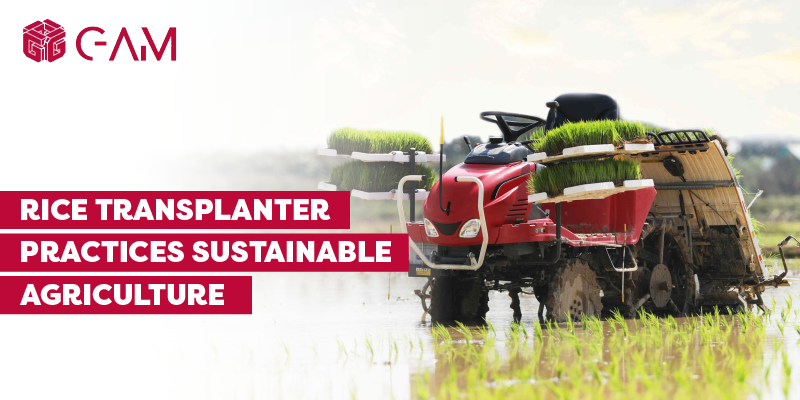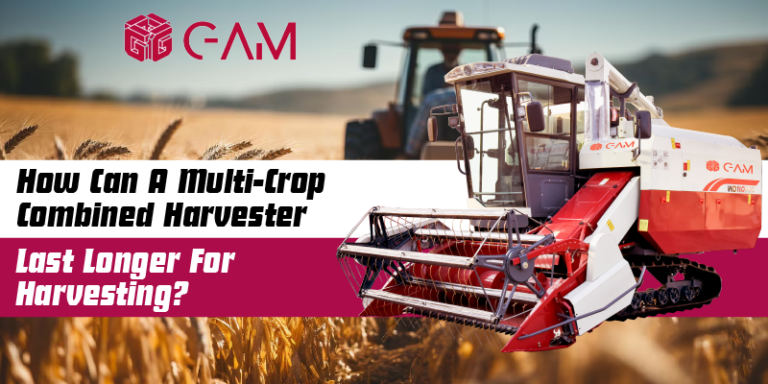Rice, a critical asset in our country, faces increasing demand as the population grows. Balancing productivity and cultivation is a crucial challenge. Rice transplanters, designed for planting seedlings, are more efficient than traditional methods involving manual seedlings. Operating rice transplanters offers numerous benefits. Understanding the details of the rice transplanter’s purchase cost is crucial for making a suitable decision. As agricultural professionals, we must understand the importance of sustainable agriculture. This approach benefits both cultivation and the environment, as it conserves resources, reduces pollution, and enhances biodiversity. These benefits should motivate us to adopt sustainable agriculture practices.
These are the significant factors that sustain our environment:
- Pest Management: Integrated pest management (IPM) is necessary to save time when pests are attacked. IPM is common in agriculture but dangerous if it is not implemented at the right time. Implementing IPM to manage these problems is best because it’s a safe choice for farming and the environment. An agricultural sprayer is an essential tool, but pest management should be used in specific areas to have less impact on the land. To buy the best rice transplanter, you can search for rice transplanting equipment costs for a worthwhile investment.
- Crop Rotation: Crop rotation means growing different crops in the same area. It helps maintain soil fertility and control pests in other seasons, decreasing the risk of crops being damaged or diseased due to pests. This practice is mainly done by the advanced technology of tractor-mounted sprayers; this equipment handles different crops according to their field size, ensuring the appropriate use of fertilizers and pesticides.
- Soil Control: Soil management should required for healthy crops. These essential sustainable practices include reducing agronomy, using organic fertilizers, and covering crops, which helps to conserve the soil structure, reduce soil erosion, and improve the health of the soil. Reduction of the tilling method of farming will reduce the disruption to the soil; it turns to prevent loam, or else it increases soil erosion. Fertility is improved by manure and composed fertilizers without the adverse effects of synthetic fertilizers. Covering crops prevents erosion and improves the conditions under the nutrient cycle. Learn more about rice transplanter sales price to avoid expensive costs.
- Water Management: Effective use and control of water are essential in sustainable agriculture. Trickle irrigation, rainwater harvesting, and moisture sensors help manage available water resources. In trickle or drip irrigation, there are no losses or wastage due to the water dropping near a plant root; it enhances with less water than any standard irrigation method. Rainwater harvesting is applied ideally to collect rainwater generally for use; using soil sensor moisture helps to ensure that crops receive ample quantities of water simultaneously. These can be rinsed with an agriculture sprayer machine to provide adequate water use methods without allowing fewer droplets; it’s used to spray pesticides and fertilizer. Other factors are necessary, whereas knowing about the cost of rice transplants is vital to making an appropriate decision.
- Agroforestry: Agroforestry is the absorption of trees and shrubs into crop and livestock farming systems. These are the significant advantages of trees and bushes: an increase in biodiversity, improving structural diversity in soil, adding carbon, and vegetation can be tailored for wind protection against soil erosion or wind damage to crops. The agroforestry system improves habitat diversity and supports increased species diversity, leading to ecological balance; such systems can be managed easily with some feasible tools available, like the orchard sprayer, which is designed to plant trees and shrubs to ensure crops and trees are taken care of.
- Organic Farming: Organic farming is a method that avoids synthetic components like fertilizers and pesticides. Nowadays, people opt for organic farming. Some techniques depend on crop rotation, composting, and biological pests to control and sustain fertility and pests. Organic farming allows an eco-friendly environment, and biodiversity promotes purity of health with crops and the cleanliness of the air. Organic farming provides energy—look for the best price for rice transplanters to avoid unnecessary investment.
- Renewable Energy Resources: Sustainable farming also prioritizes using renewable sources such as solar, wind, or bioenergy; these sources reduce the carbon associated with fencing and other farming processes while offering energy use. Solar panels are used to run irrigation systems, while wind turbines produce electricity for use in farms; bioenergy is developed from agricultural waste and changed into biogas. It offers renewable energy in farming to help with sustainability and serves long-term environmental benefits.
Benefits of Rice Transplanter
A suitable transplanter machine enhances additional income, which is helpful in different farming scenarios, such as impacting rural employment. Modern rice transplanting reduces the demand for manual labor and creates new opportunities for skilled technicians. Increasing efficiency creates sustainable agriculture, upskill opportunities, improves farming, and prevents soil erosion.
Conclusion
Modern rice planters are more than a tool to enhance the cultivation of contemporary agriculture and transform it into sustainable agriculture. Before buying, you must check the rice transplanter purchase cost to decide a better way to buy the most appropriate one for your field. Contact Godabari Agro. We are ready to guide you through the purchasing process. Use our modern rice transplanter and join us in revolutionizing farming as sustainable agriculture.




